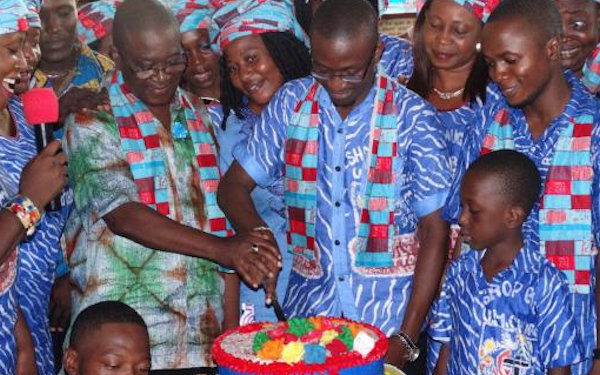The fast-growing African Central Conference proposes splitting itself into four new Central Conferences.
HEATHER HAHN
TAFADZWA MUDAMBANUKI
United Methodist News Service
If an African proposal wins approval, the map of The United Methodist Church’s fastest-growing region could look very different in years to come.
The Africa Central Conference — a church region that stretches from the southern tip up through the eastern side of the continent — has proposed splitting itself into four new central conferences. Such a move would have implications for future bishop elections and ways the church does ministry in Africa.
Delegates approved the recommendation during the central conference meeting Aug. 11-14 in Angola’s capital.
However, that’s just the first step. Establishing a new central conference requires a two-thirds majority vote at General Conference, the denomination’s top lawmaking assembly. The legislative body is scheduled next to meet in 2020.
The central conferences are seven church regions in Africa, Europe and the Philippines. The African continent currently has three central conferences — Africa, Congo and West Africa. Each encompasses multiple countries and languages.
Like their U.S. counterparts — the five jurisdictions — central conferences encompass groups of annual conferences and oversee the elections of bishops.
But unlike U.S. jurisdictions, individual central conferences have authority to make “such changes and adaptations” to parts of the Book of Discipline — the denomination’s governing document — as missional needs and differing legal contexts require.
Central conferences meet at least once every four years. The Africa Central Conference, which has five active bishops, had no elections at this meeting.
Under its proposal, the number of central conferences would increase. The proposal would divvy up the current central conference to create:
East Africa Central Conference, including Burundi, Rwanda, Kenya, Ethiopia, South Sudan and Tanzania
- South Central Africa Central Conference, including Zimbabwe, Malawi, Zambia and Botswana
- Southeastern Africa Central Conference, including Mozambique, South Africa, Lesotho, Swaziland and Madagascar
- Southwestern Africa Central Conference, including West Angola, East Angola and Namibia
The new proposed boundaries take into consideration geography, languages, finances and missional needs. If approved, each new central conference would elect its own bishops and have authority to adapt its ministry to missional requirements.
What happens next
The proposal next heads to the Standing Committee on Central Conference Matters, which is a General Conference committee that continues to meet between the legislative sessions.
The standing committee has 39 members — three from each jurisdiction and central conference, as well as three representatives from the United Methodist Board of Global Ministries, the denomination’s mission agency. It is the only denomination-wide body in which people who live outside the United States are the majority.
The standing committee will vote on and possibly revise the proposal before determining if it will bring it to the full General Conference plenary for a vote.
As part of General Conference-approved efforts to add five bishops to Africa, the standing committee already had plans to review the number and boundaries of central conferences in Africa. The committee hopes to work with African church leaders to develop a comprehensive plan for more effective ministry.
Drawing the lines is not always intuitive. For example, two central conferences currently claim parts of the nation of Zambia. The English-speaking Zambia Annual Conference is part of the French-speaking Congo Central Conference and overseen by the South Congo Area bishop. However, The United Methodist Church also has a smaller presence in Zambia that is part of the Africa Central Conference and overseen by the English-speaking Zimbabwe Area bishop.
Ultimately, it’s up to General Conference to fix the boundaries of central conferences and the number of bishops who serve them. It’s up to individual central conferences to determine the boundaries of episcopal areas and where bishops are assigned.
In other business
The Book of Discipline also authorizes each central conference to set the borders of the annual conferences within its bounds.
The Africa Central Conference voted to create the Uganda/South Sudan Annual Conference and the Kenya/Ethiopia Annual Conference. It also affirmed the General Conference decision to make Rwanda a provisional annual conference.
Those nations were all previously diverse parts of the East Africa Conference. That episcopal area also encompasses the Burundi Annual Conference, which was created in 2012.
Last Updated on January 9, 2023

